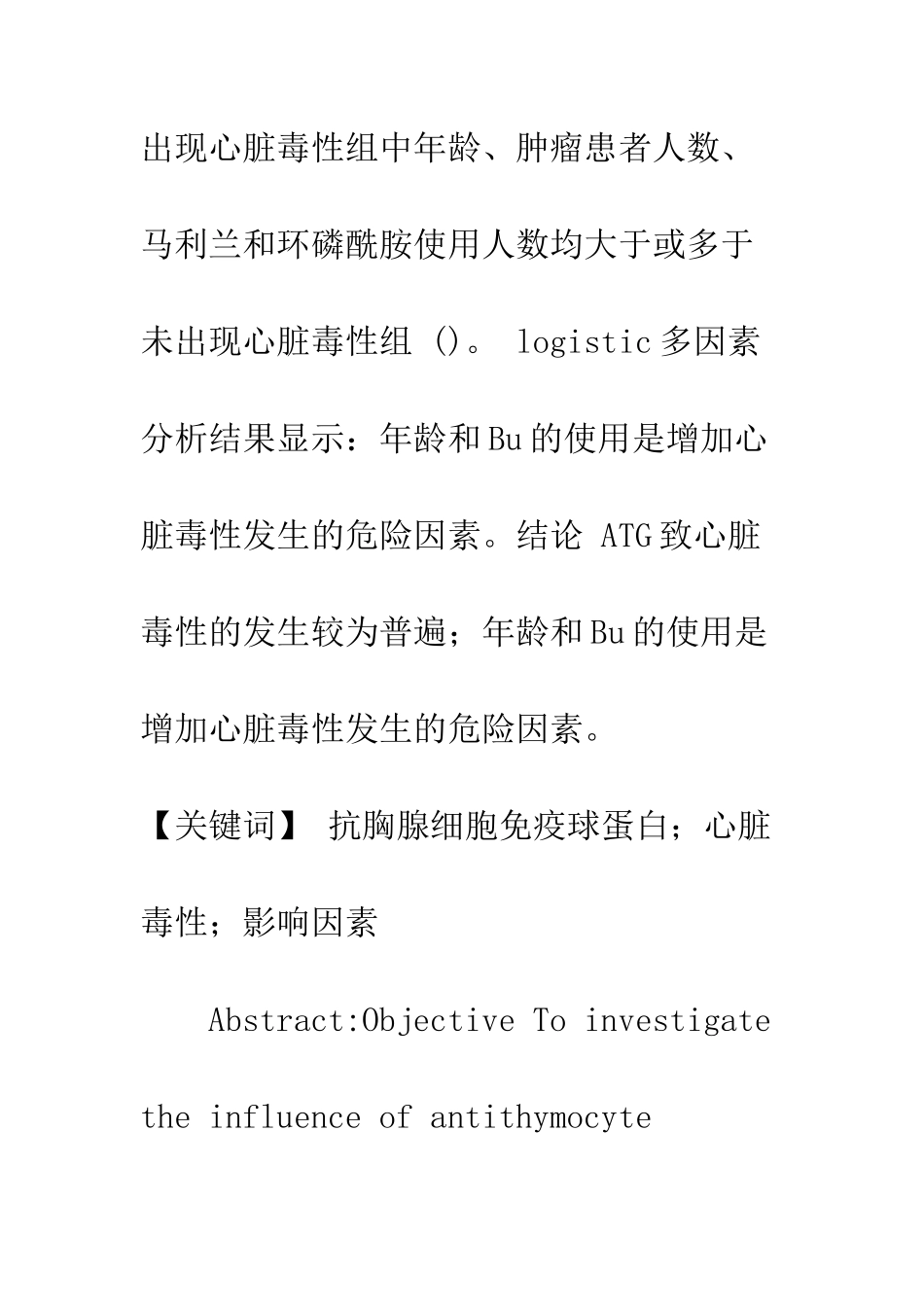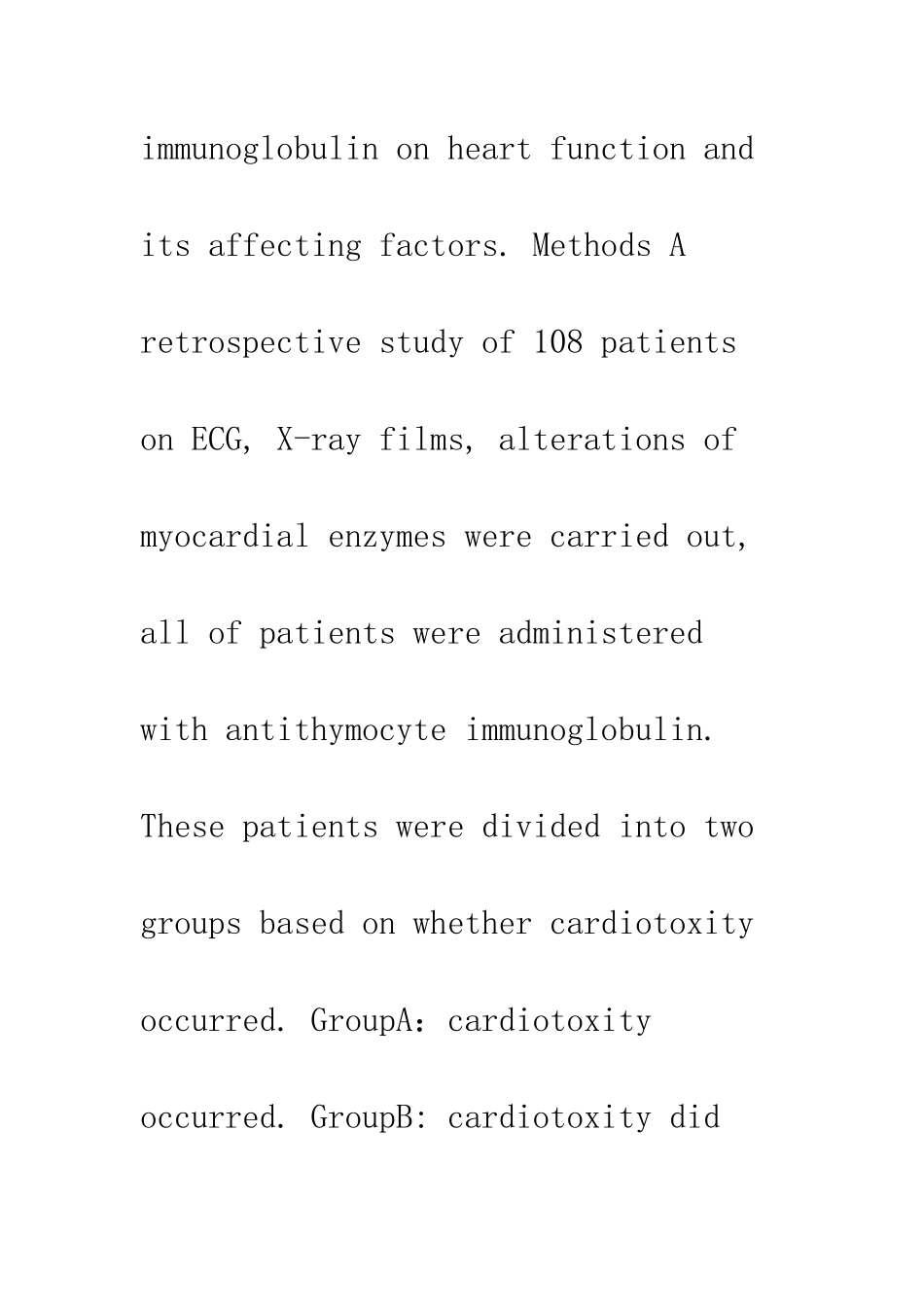抗胸腺细胞免疫球蛋白所致心脏毒性及其影响因素【摘要】 目的 探讨抗胸腺细胞免疫球蛋白对心脏的毒副作用及相关影响因素。方法 回顾性分析 108 位患者使用抗胸腺细胞免疫球蛋白前后心电图、胸片、心肌酶的变化及所致心脏毒性临床表现。分析抗胸腺细胞免疫球蛋白致心脏毒性的危险因素,先对各变量进行单因素分析,然后将单因素分析有意义的变量纳入 logistic 回归进行多因素分析。结果 50 例患者出现心脏毒性,发生率%。单因素分析结果显示:出现心脏毒性组中年龄、肿瘤患者人数、马利兰和环磷酰胺使用人数均大于或多于未出现心脏毒性组 ()。 logistic 多因素分析结果显示:年龄和 Bu 的使用是增加心脏毒性发生的危险因素。结论 ATG 致心脏毒性的发生较为普遍;年龄和 Bu 的使用是增加心脏毒性发生的危险因素。【关键词】 抗胸腺细胞免疫球蛋白;心脏毒性;影响因素 Abstract:Objective To investigate the influence of antithymocyte immunoglobulin on heart function and its affecting factors. Methods A retrospective study of 108 patients on ECG, X-ray films, alterations of myocardial enzymes were carried out, all of patients were administered with antithymocyte immunoglobulin. These patients were divided into two groups based on whether cardiotoxity occurred. GroupA:cardiotoxity occurred. GroupB: cardiotoxity did not occur. Univariate and multivariate analyses (logistic regression) were conducted to identify the affecting factors. Results The incidence of cardiac toxicity was %. The result of univariate analysis showed that the age of the patients with the symptoms of cadiotoxicity in the group A was older than that in the group B, and the number of patients with tumor, the number of patients administered with busulfan (Bu) and cyclophosphamide (Cy) in the group A were more than those in the group B(). Logistic regression identified that age and Bu were risk factors for It is indicated that patients administered with antithymocyte immunoglobulin had hig...


